“Every time I hulled 500 kg of paddy, I would be left with only 275 to 300 kg of rice. I lost both grain and income,” says Gopi, a small-scale organic farmer from Tamil Nadu. “The money was never enough to take care of my expenses and family.”
On his 10-acre farm, Gopi works with care and commitment. Yet the very step that should have turned his hard-earned harvest into food and income was instead draining value away. For every season’s crop, he spent days hauling his paddy to distant mills, only to return with far less rice than he expected. The wait meant fresh grain often sat for days, losing quality, while his earnings shrank.
His struggle is not his alone. Across rural India, countless farmers face the same invisible trap. Their labour in the fields is undermined at the mills, where the simple act of turning paddy into rice chips away at both quality and livelihood.
The hidden struggle of rice processing
For many farmers, the real challenge begins not in the fields but at the mills where paddy is converted into market-ready rice. Traditional diesel-powered mills dominate villages across India, but they are unsuitable for small-scale operations. Recovery rates are low, often yielding less than 300 kg of rice from every 500 kg of paddy processed.
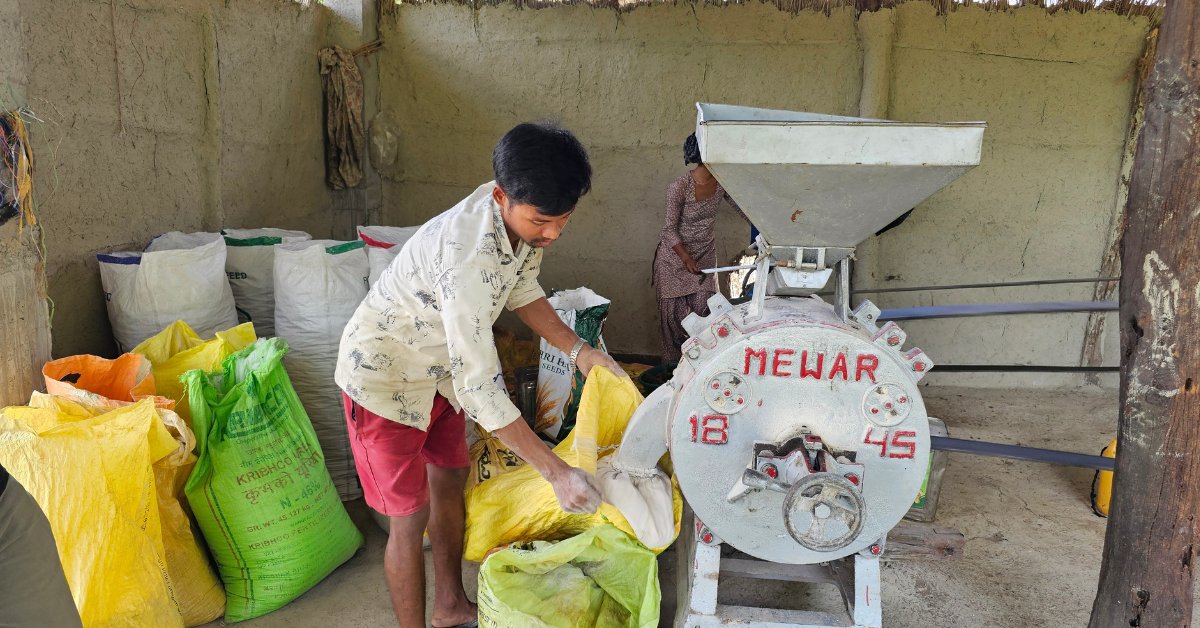
The impact is severe as farmers lose volume, grain quality suffers, and profits fall. With little control over the process, many end up selling raw paddy at throwaway prices, sacrificing both income and independence.
This cycle traps farmers in frustration. Even when they grow organic or high-quality paddy, the poor recovery of existing mills means their effort does not translate into fair returns. For many, it feels like years of work amount to little more than survival.
Farmers take charge with a ‘bright’ solution
Breaking this cycle needed innovation tailored to the realities of smallholder farmers. This is where ‘SEMA Alto’ — short for ‘Solar-powered Efficient Machinery for Agriculture’ — steps in. Founded in 2017 in Bengaluru by co-founders Assad Jaffer and Dania Athar, the company was created to build clean energy and agri-tech solutions that lower costs, cut carbon emissions, and empower rural communities to keep more value from their produce.
Rather than retrofitting bulky diesel mills that were never suited to villages, SEMA reimagined the process entirely. The result was a decentralised, solar-compatible rice mill: compact, modular, affordable, and easy to maintain. Farmers could now process their paddy locally, on demand, instead of depending on distant and inefficient mills.
“Farmers have to travel long distances to access large mills and do not have full control over how or when their paddy is processed,” Assad explains. SEMA’s solution puts that power back in the village, providing an energy-efficient, farmer-first machine that can work with small batches. This approach reduces transport hassles, prevents losses, and cuts operational costs. At the same time, integrating solar energy makes the solution both sustainable and aligned with India’s wider renewable energy goals.
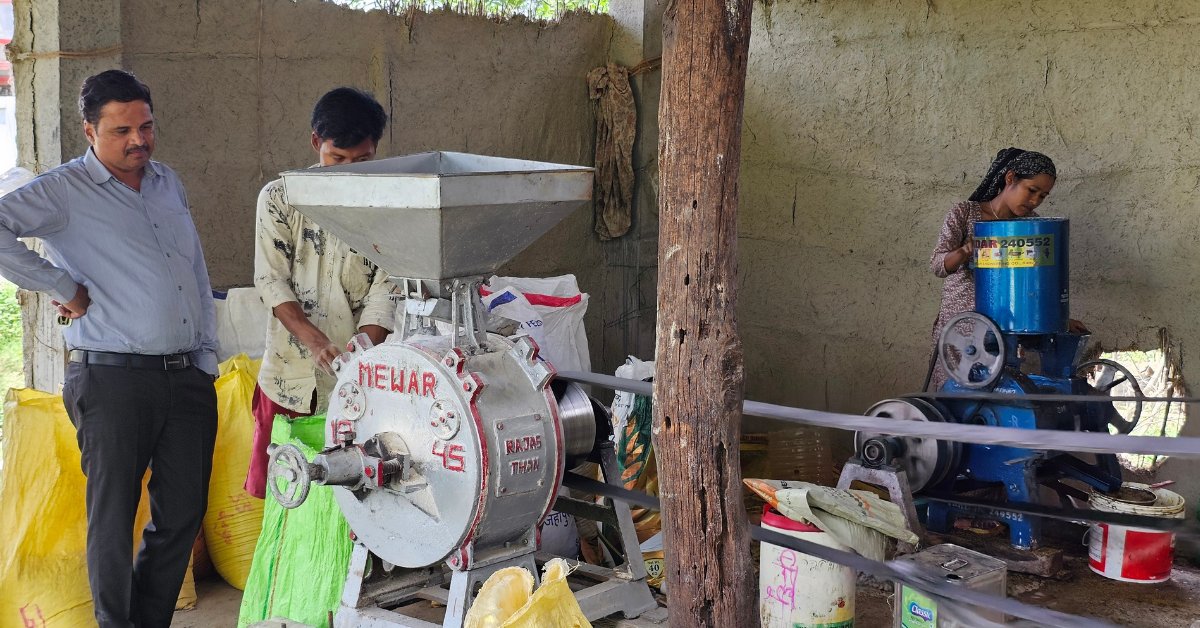
With over 150 units installed across Tamil Nadu, Karnataka, and Andhra Pradesh, SEMA Rice Mills supports farmers to package and sell rice of higher quality and at improved margins. For farmers like Gopi, this is more than just a machine. It marks a turning point in their agricultural journey.
A bridge that took innovation to the fields
While SEMA designed the hardware, bringing it to scale required bridges beyond technology. The Council on Energy, Environment and Water (CEEW), based in New Delhi, played a pivotal role in this process under the leadership of Abhishek Jain, Director of Green Economy and Impact Innovations.
Through its ‘Powering Livelihoods’ initiative, a collaboration with Villgro (a social enterprise incubator), CEEW helped unlock financing, raise awareness, and link innovations like SEMA Rice Mills to government schemes.
“Innovations like SEMA Rice Mills often remain isolated if they do not connect with the right ecosystem,” says Abhishek. “Our role was to create those connections, making sure these technologies reach the farmers who need them most, backed by appropriate finance, supportive policy, and local demonstration.”
CEEW’s efforts were crucial in enabling end-user financing options for farmers who lacked collateral. They also organised demonstrations within villages to build trust and show the value of the mills in action.
Abhishek adds, “We worked closely with financial institutions to introduce mechanisms like First Loss Default Guarantees. These tools reduce the risk lenders face, making it easier for farmers with limited assets to access credit.”
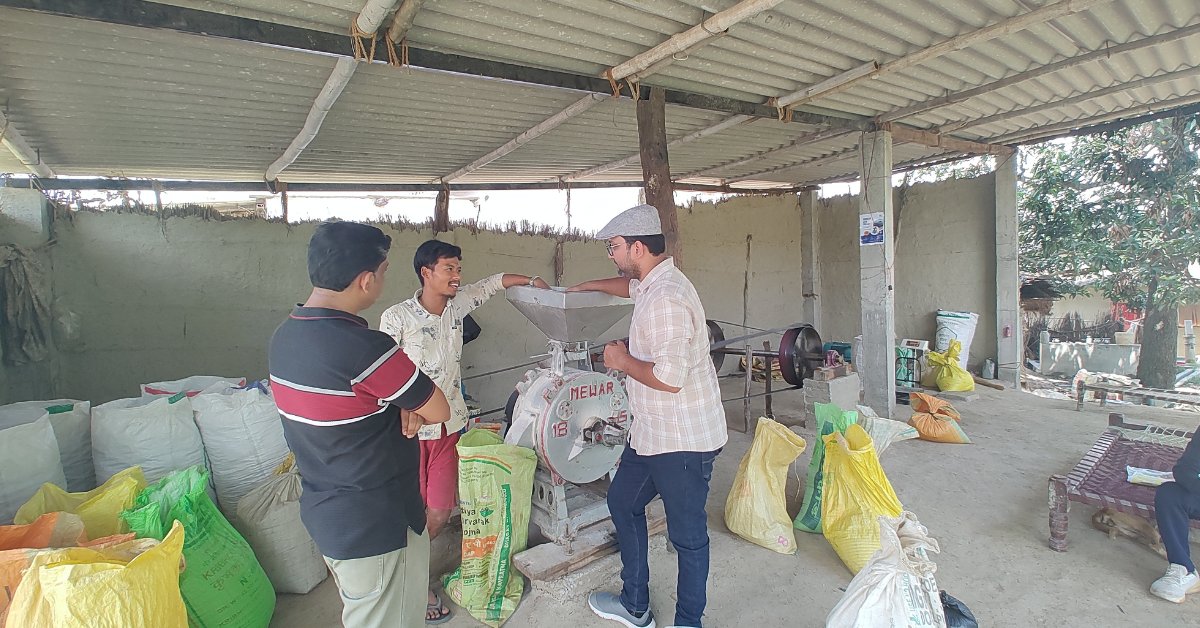
Alongside finance, CEEW also pushed for policy recognition. They successfully advocated for the inclusion of renewable-powered processing equipment in national programmes such as the Prime Minister’s Formalisation of Micro Food Processing Enterprises (PM-FME) scheme. This opened access to subsidies and loans for farmers, making adoption more affordable.
“Being included in the PM-FME scheme marked a breakthrough,” Abhishek emphasises. “It provided financial backing and gave official recognition to decentralised solar-powered processors, opening doors for mass adoption and long-term sustainability.”
From paddy to polished rice: Step-by-step
The secret behind SEMA Rice Mills’ success lies in their carefully engineered design, which protects grain quality while maximising yield. Every stage of the process is built for precision and efficiency, producing cleaner, more polished rice with minimal loss.
It begins with the pre-cleaner, which removes straw, chaff, and light impurities from raw paddy. This ensures that only clean grain enters the mill, protecting the machinery and improving downstream processing.
Next, the de-stoner removes heavier debris such as stones that could damage the equipment or contaminate the rice. With this step, the quality of the final product is preserved.
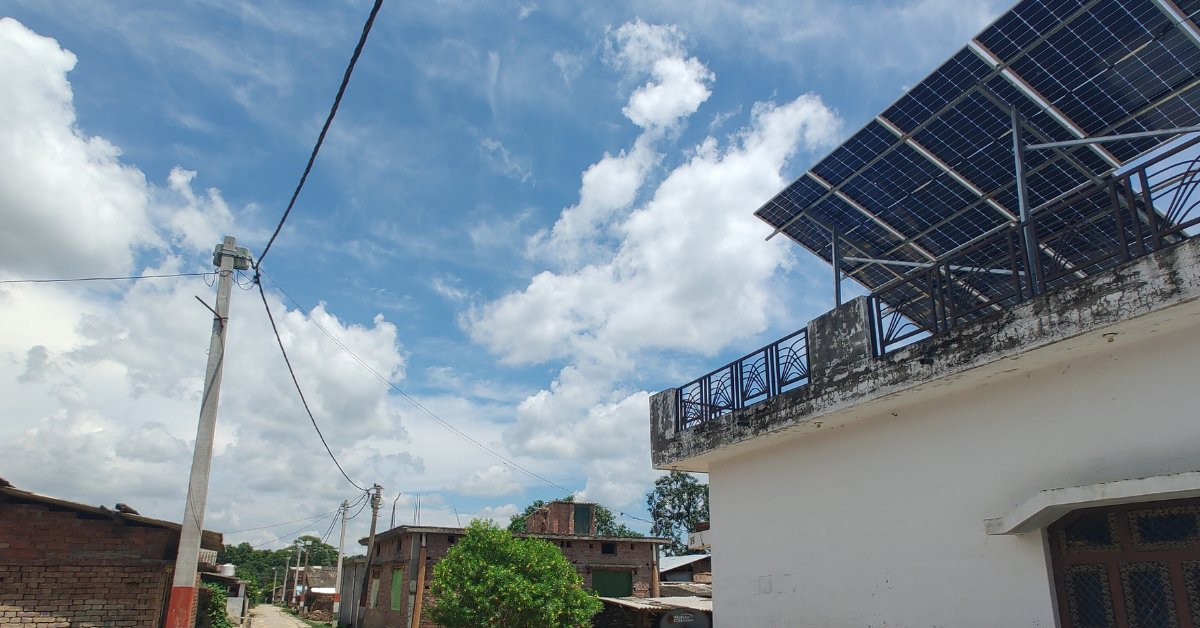
The paddy then moves to the triple-roller rubber sheller, the mill’s most distinctive feature. Driven by a single motor, three rollers are arranged in a triangular layout so that each kernel passes through twice in a dual-pass sequence. This doubles hulling efficiency while conserving energy, ensuring more complete husk removal without breaking the grain.
Once hulled, a separator isolates the brown rice from any remaining husk, giving farmers a cleaner output to send forward for polishing.
The grains then pass through a semi-polisher followed by a full-polisher. These stages refine the rice gradually, enhancing both its appearance and shelf life, while still preserving grain integrity — an essential factor for market acceptance. The grader completes the process by sorting grains by size to guarantee uniformity before packaging, which is critical for consumer appeal and pricing.
The mill’s components are arranged in a “waterfall” layout that uses gravity to move the grain, reducing power needs. Constructed entirely from food-grade stainless steel, the system meets hygiene standards and ensures the rice is fit for certification and sale.
Despite requiring only 3.7 to five kW of power, the mill achieves a head-rice recovery rate of up to 65 percent, compared to the 25 to 40 percent typically seen in conventional rural mills. This leap in efficiency means more rice for farmers, less waste, and higher income from the same harvest.
Trust grew as the rice piled up
To win the trust of farming communities, SEMA and CEEW worked together to identify “demonstration champions” — early adopters like Gopi who could show neighbours how the rice mill worked in practice. These live demonstrations allowed people to see the machine’s quality and efficiency with their own eyes, helping build local confidence.

Financing was the next hurdle. To make loans more accessible, CEEW introduced a special system called First Loss Default Guarantees. “When farmers seek loans for equipment like the SEMA Rice Mill, financiers worry about the risk of default. To address this, we provide First Loss Default Guarantees, which cover a portion of the lender’s loss if a farmer cannot repay, usually starting at 25 percent,” Abhishek explains.
This system helped ease lender concerns. “The guarantee reduces the risk for banks, encouraging them to lend to farmers who might otherwise lack collateral. We use philanthropic funds to back these guarantees, creating what is known as blended finance, combining grant money with commercial loans to build confidence,” Abhishek adds.
As lenders gained trust in the system, they saw that defaults were rare. “In our programme, default rates hover around two to three percent,” Abhishek shares. “This confidence lets financiers reduce their guarantee requirements, from 25 percent down to 15 percent, making lending more cost-effective.”
He also points to other funding models, “Sometimes, subsidies from multilaterals or bilateral agencies cover about 30 percent of costs, with farmers contributing 20 percent upfront, and financiers providing the remaining 50 percent. This structure further unlocks capital, helping farmers access these solutions early on.”
Measuring freedom in every kilogram
With five SEMA Rice Mill units now running, Gopi’s farm hums with both productivity and promise. “Previously, I spent days hauling to the town mills and waited for poor yield. Now, when I get an order, I process it immediately.”
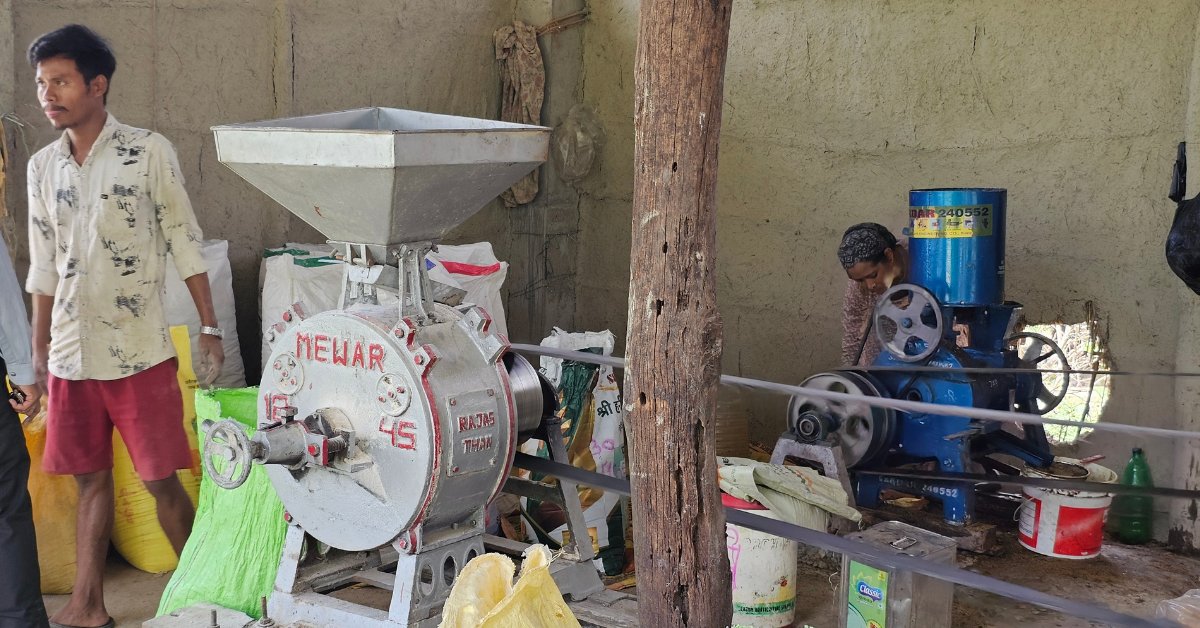
The difference is clear in the numbers. His rice recovery has risen to between 320 and 350 kilograms per 500 kilograms of paddy — a 30 percent improvement that directly boosts his income. The rice he produces is clean, polished, and ready for retail. It sells for Rs 80 to Rs 100 per kilogram, compared to the Rs 45 to Rs 50 he once received selling raw paddy. This doubling of income has given him both financial security and new hope.
But for Gopi, the biggest gain is independence. “I am no longer reliant on distant mills or intermediaries. I run the mill five days a week to get the rice, as per the demands of the customers.”
Ripple effects of a simple solar idea
The impact of the rice mill reaches far beyond higher earnings. Where it once took three or four people to process his grain, Gopi can now run the mill single-handedly. Processing and packaging rice on demand keeps the product fresh and pest-free, which attracts more customers and reduces spoilage.
Together, SEMA and CEEW have shown how change is built — with innovation, financing, trust in villages, and policy support working side by side. The result is a model that can be replicated across India to put power back in farmers’ hands.
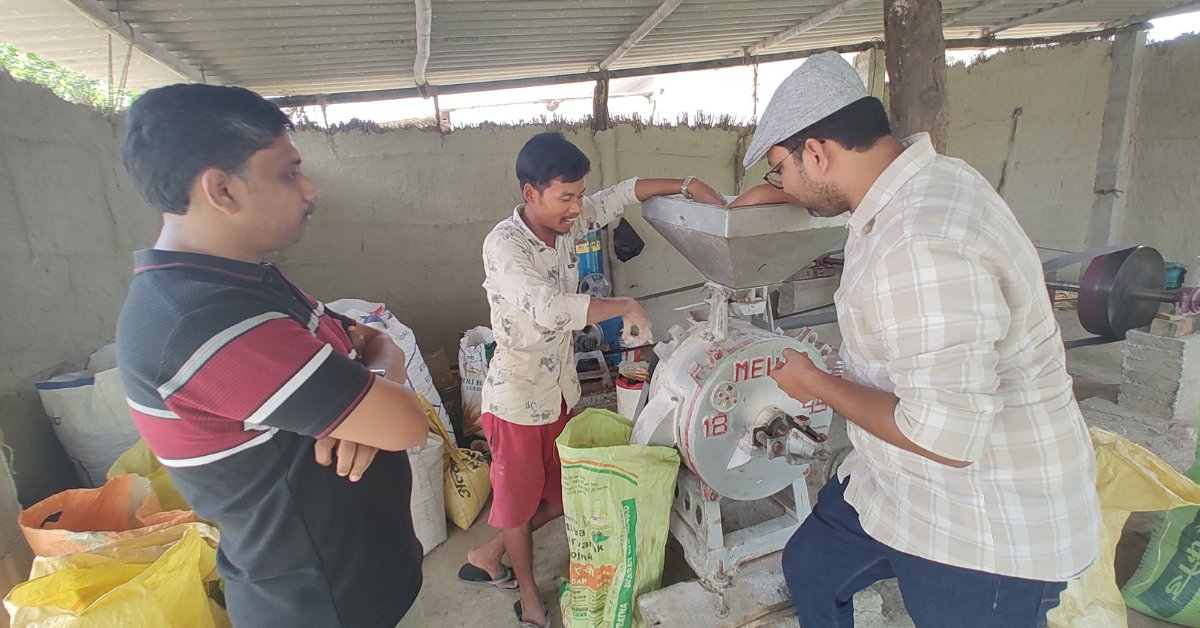
SEMA’s technology is also adaptable. Beyond rice, it can be used for processing millets, maize, and wheat, opening the door to wider change in rural economies. As more local innovators come forward, initiatives like Powering Livelihoods are ready to scale this impact, linking enterprise growth with sustainability and inclusion.
Gopi sums up the change in his own words: “I grow paddy, process it, and sell it, all by myself in very little time.” In that independence lies a revolution that is endorsed by ingenuity, solar energy, and a supportive ecosystem that together are refining lives.
All pictures courtesy CEEW
No comments:
Post a Comment